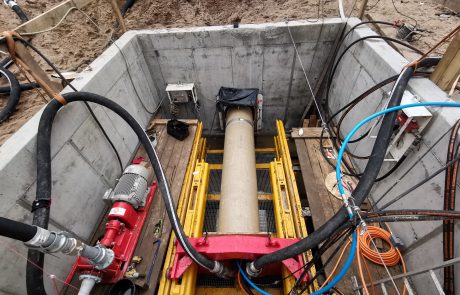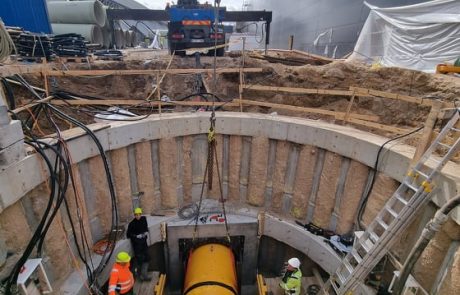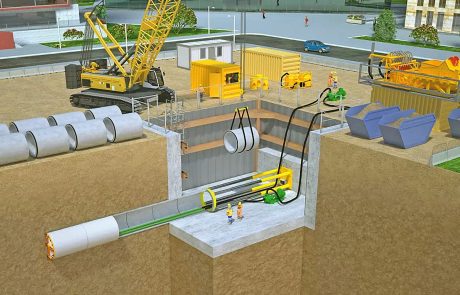MICROTUNNELING / PIPE JACKING
MICROTUNNELING / PIPE JACKING
The main applications of microtunneling are the installation of new sewerage and drainage systems, gas and water mains, oil pipelines, electricity and telecommunication channel systems.
The Direct Pipe technology is widely used for the installation of pipeline routes under water bodies.
The technology is used to perform work under roads, highways, railways, rivers, canals, buildings, airports and minimizes surface disturbance.
The technology is suitable for all types of soil in dry and wet conditions, including rock, mixed soil or single stones.
BASIC DATA:
| Pipe diameter | 780-2200mm |
| Materials | Polymer concrete, fiberglass or ceramic pipes |
| Drilling distance | Up to 250 m |
ADVANTAGES OF TECHNOLOGY:
- Accuracy of work performance
- Wide range of applications
- Possibility of long drives
- Possibility to work at a particularly deep depth
- Possibility to install system pipes immediately
- Less interface with infrastructure
- Less traffic disturbance
- Possibility to work underwater, buildings
- Possibility to work in all types of soils, including rock, mixed soil or single stones
DESCRIPTION OF TECHNOLOGY PROCESS:
AVN pipe-jacking machines are usually controlled remotely from a control panel located on the surface. Information on the location of the AVN machine, orientation, and hydraulic units is constantly provided to the operator through a computer console, video surveillance camera, or gyroscope. The operator can monitor the activity of individual devices through the installed video cameras. The AVN machine moves forward with the help of a hydraulic press, which is mounted in a concrete shaft, and when the hydraulic drive rotates the cutting ring. As the machine moves through the ground, new pipe segments are connected in the shaft until the AVN machine receiving shaft is reached. The soil accumulated in the machine mixes with the water used for drilling and its liquid consistency is removed to the separation station. The water settled at the separation station is transferred back to the AVN machine, thus creating a closed loop.






